Stefan was driving, taking me on a tour of avocados in South Africa, but he took a turn on a dirt road into a banana plantation. We got out of the truck and I followed him into the dark and humid canopy of green acres and acres of Dwarf Cavendish plants. We walked through the leaf litter. I couldn’t see anything but bunches and leaves of bananas.
Then some light, then a clearing, and a majestic old avocado tree.
A beautiful avocado tree standing in the middle of bananas. It was like this:
. . . and then?
Why was an avocado tree in the middle of a commercial banana farm?
The land was all avocados before it turned to bananas, Stefan told me. The farmer had spared this one tree because it was so healthy. Many of the rest of the avocados, planted around the 1920’s, had become sickly or died. Not this one, and he couldn’t cut down such a survivor.
. . . and then?
First you admire this tree that has escaped the chainsaw. Its immense size, its health and longevity, its position supervising the lowly bananas.
But from there you might think, “This tree is trying to tell us something. It has something to give. It is different from others.” Especially you think this if you are Stefan.
Stefan Koehne is now semi-retired, but his full-time job for decades was to find new avocados, to test rootstocks, cultivars, and cultivation techniques for Westfalia Fruit. He knows that the composition of this tree in the bananas might, on one hand, be uniquely suited to thrive in the conditions of this location, but on the other hand, it might be hardier more generally and able to survive and be fruitful elsewhere better than other trees as well.
What if . . . ?
Avocado trees can be cloned, so Stefan could test it in different locations. If it thrived elsewhere too, then it could be used as a base, a foundation upon which other trees could be built. It could serve as a rootstock to help grow other fruiting varieties on top (say Hass, Fuerte, GEM, etc.). People might be able to grow whole farms of productive and long-lived trees upon the stock of this one.
In other words, the tree should not only be preserved in place. It can be a bigger gift than that. It should also be propagated and shared with others.
In fact, Stefan has already collected material from this tree and propagated it and begun testing it.
Alongside his wife Sylvie, Stefan has gone through this process with other finds many times. For example, together they shepherded one tree called Dusa (also called Merensky 2) through a couple decades of intensive testing in different locations before it proved so worthy that it was patented and is now the most widely cloned avocado rootstock in the world, including in California.
(My post on avocado rootstocks.)
Survivor trees
Later on this day last month, during my avocado tour with Stefan, he showed me other “escape” or “survivor” trees.
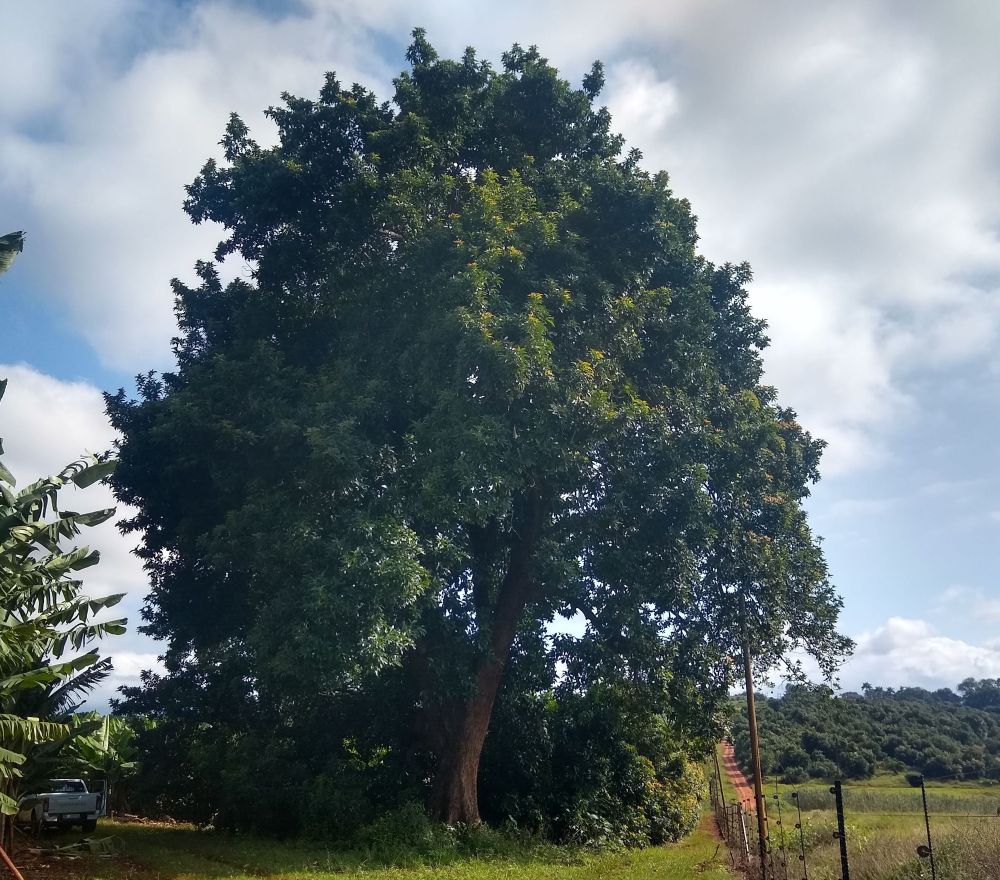
See what’s remarkable about this survivor tree in my post, “Avocado tree clones itself.” And in this video:
Super trees
And he also showed me some “super” trees. These are trees that are not only healthy and long-lived like the survivor trees above, but have been grafted (to e.g., Hass or Fuerte) and also make lots of fruit, far more fruit year-after-year than other trees of the same variety in a particular grove.
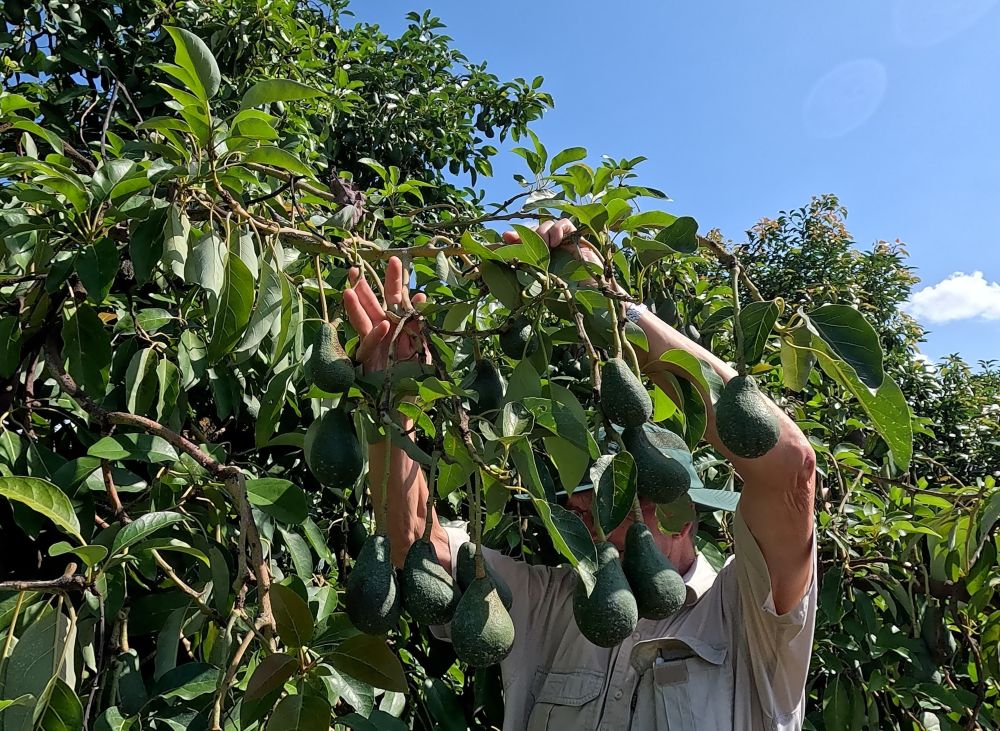
Have a look at the full crop on this super Fuerte this year:
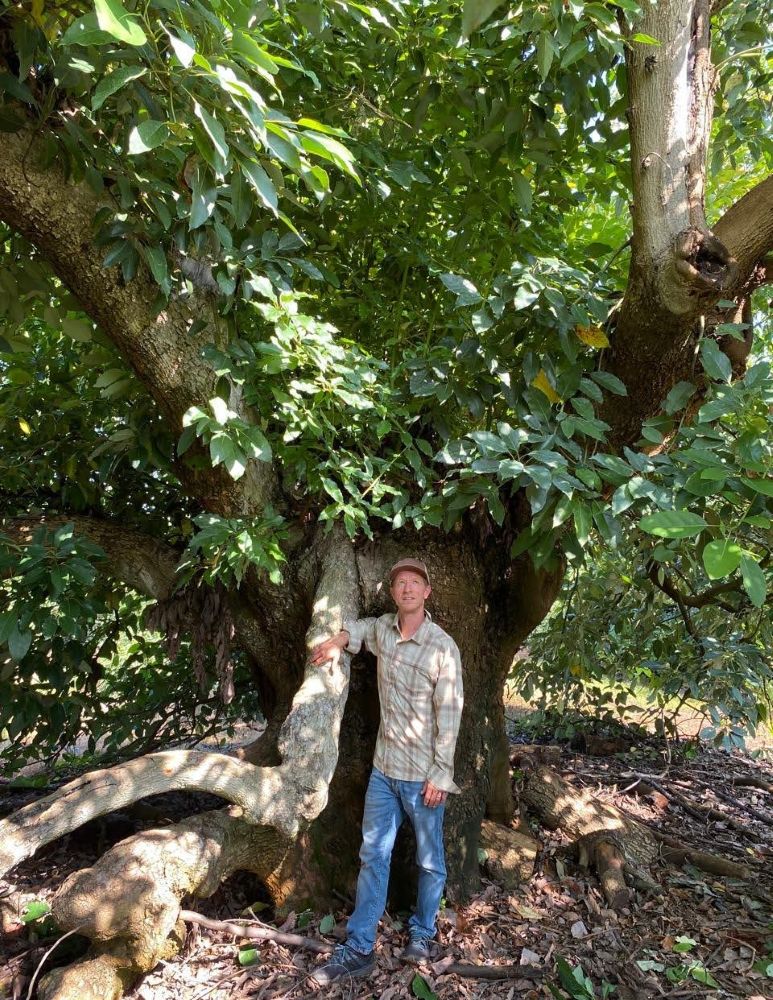
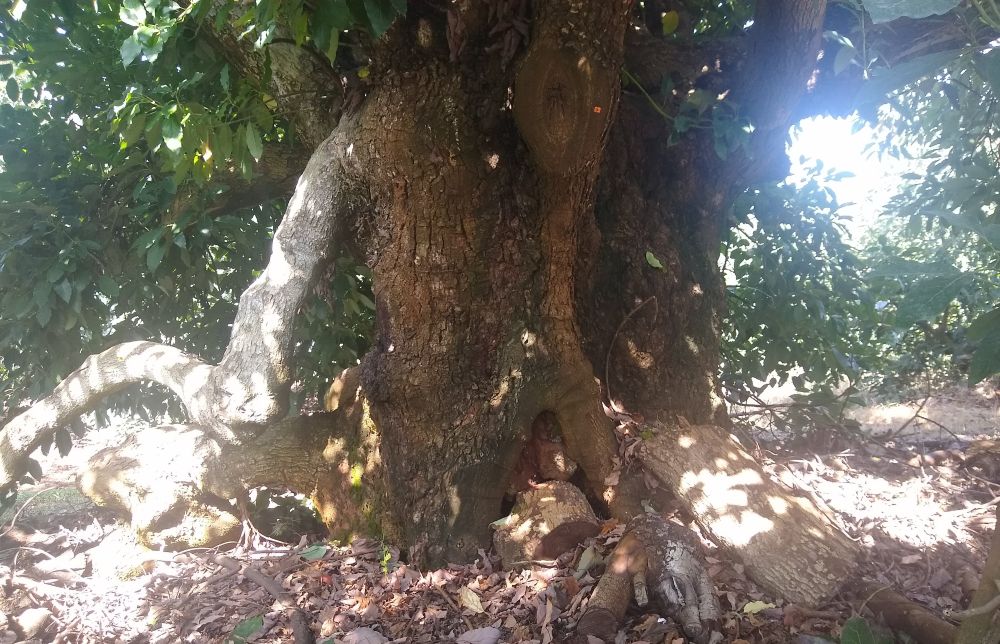
Have you ever encountered a “survivor” or “super” avocado tree? I keep an eye out for these types of trees in Southern California, and I tell Stefan or someone skilled like Stefan so that these trees can be stewarded. It would be a shame to not pass on the good attributes of such trees.
Back to the avocado in the bananas
This is Stefan standing at the trunk of the avocado tree inside the banana plantation:
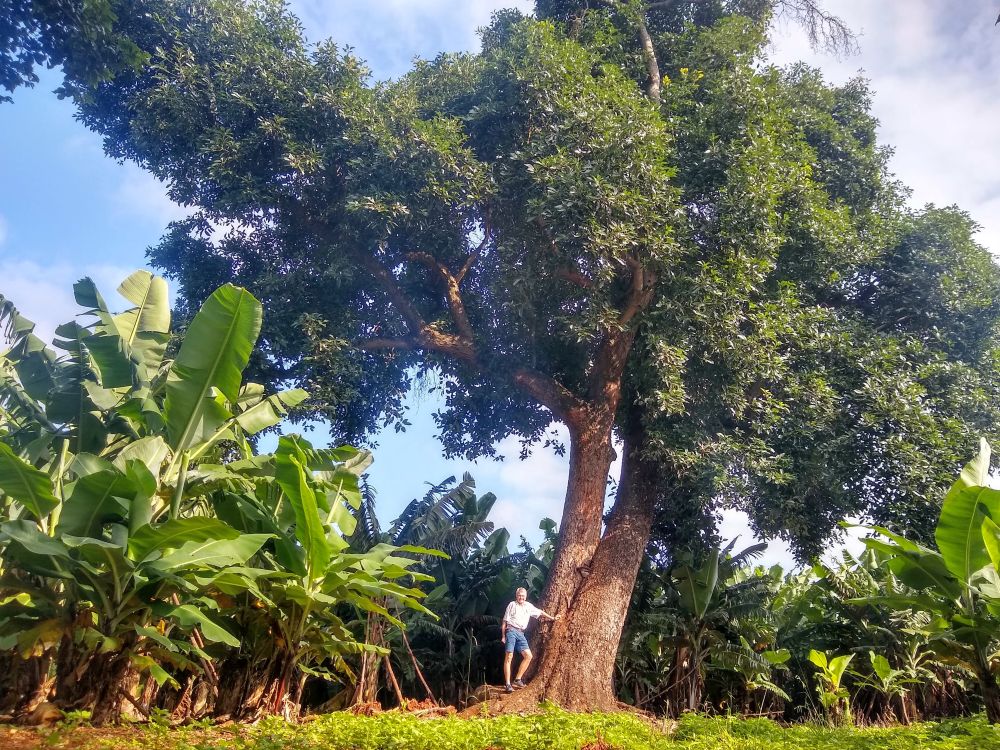
Once I was done marveling at the tree, in order to get back to Stefan’s truck on the road, we had to walk back through the dense forest of banana plants.
On the walk, Stefan stopped me and pointed down at a track in the mud: “Hippo.”
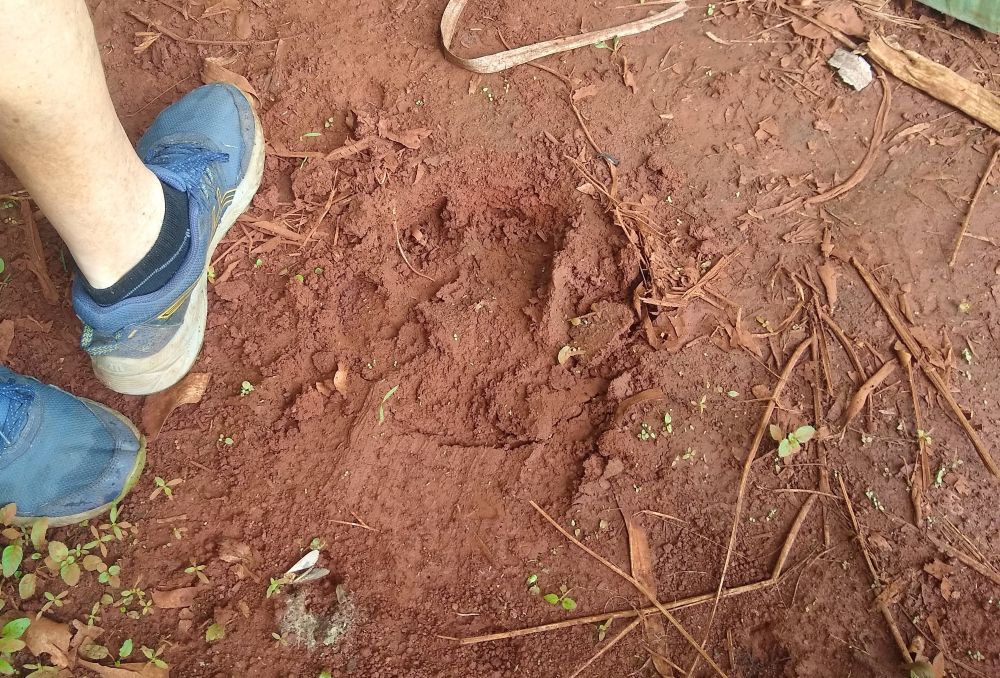
Thank you for your support of my Yard Posts so I can keep them coming and keep them without ads.
All of my Yard Posts are categorized and listed here.

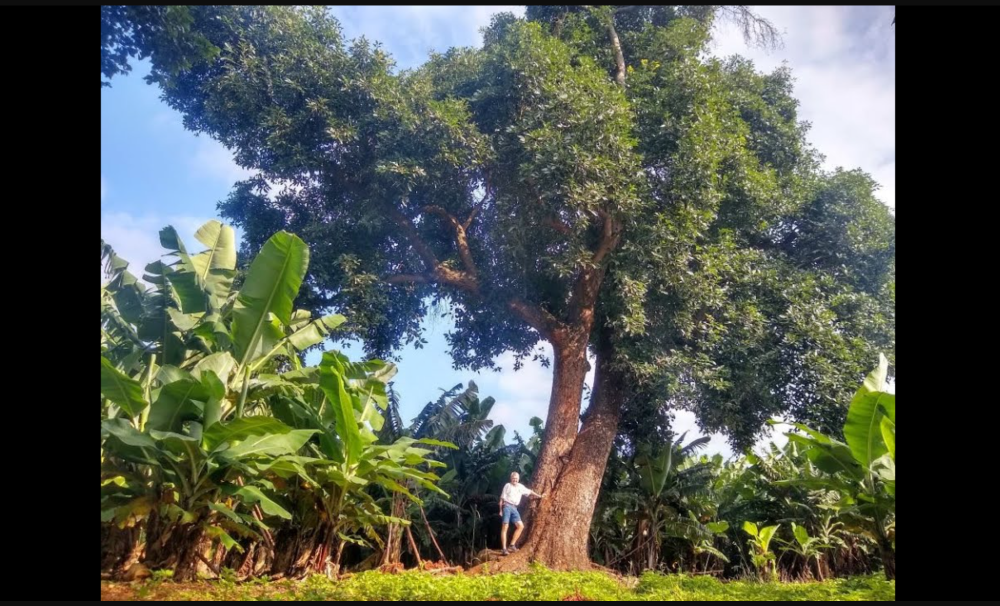
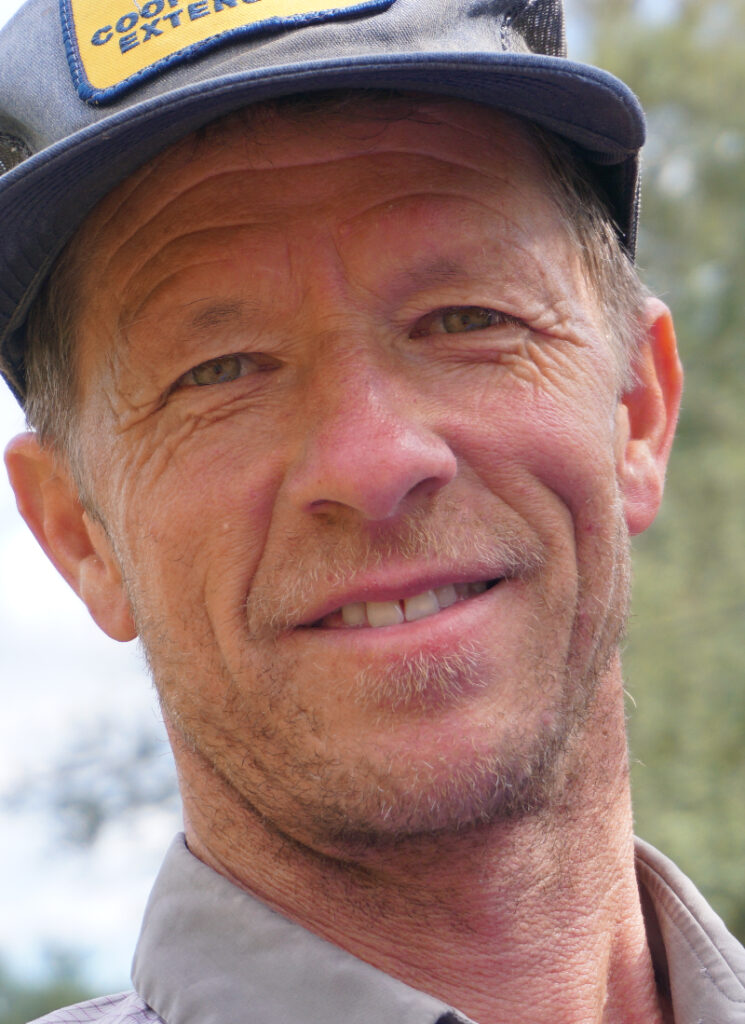
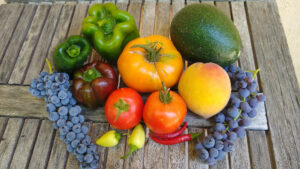
Oh dear! My better half has warned me that our three year old avocado will end up too big for our modest front yard. I will keep this post away from him. 🙂
Wow wow wow! Those trees are truly incredible!
I have a story about a survivor tree in Anaheim, CA. It was my grandparents trees. There were two planted in the 60s when my grandparents moved into their new home. Loved and cared for daily by my grandpa “Poppops.” He was always fiddling around in the yard. Trimming here and there, grooming the trees whenever I visited as a child. Then he’d go to his back porch, grab his deck of cards and take them to the picknick table to play solitaire. The trees were Fuerte and the two trees enveloped their suburban backyard in mottled shade.
Then one day in the 1990s my grandparents received an “eminent domain” notice and had to move out… and my Poppops had to leave his beloved trees.
There house was bulldozed to make way to widen the 5 freeway. I would drive by every now and then… to visit and remember my grandparents. My Poppops and Nana died only a few years after moving to their last house in Fullerton. But this is where my memories of them are stored. One day the fences were finally gone from the worksite, and about 10 years later a new house was built on the land. And there it still stands. One of my Poppops trees. It’s always there waiting at the end of the alley. It always makes me cry and think of all my memories of a wonderful childhood and my family that has passed.
Hi SL,
That is both a sad and comforting story. Thanks for sharing. I’ll think of it next time I drive the 5 through Anaheim — and keep my eye out for the tree.
You did a bucket list my friend. Can’t wait to hear and read your stories!
Great post, Greg.
Man, this trip must have been a dream! Showing the kids somewhere so important to you and avocado hunting!!
Hi Jessica,
It really was a dream trip. I’m having a hard time admitting that it’s over!
Greg,
I’m so happy to hear that you got away and so excited about the potential that exists with the studies of the survivor trees.
Greg,
What a memorable trip for you and your family!
We purchased a Vista property 23 years ago with an ailing orchard. The widow turned off the water to the orchard for many months — as that was her husband’s hobby… We nursed a 10-12 year old Fuerte avocado tree back to health. I pruned it so it could be an outdoor living room like you pruned yours for your kids. It has been a reliable producer and is impressively large, perhaps it could be considered a survivor tree?
Hi Lorie,
I think so. The key is that you had other trees to compare it to. If other trees suffered a lot more without the irrigation and couldn’t be recovered like this one, then you have a survivor that is worth investigating.
Sometimes in Southern California (where we get no summer rain) such trees happened to be near something else that was being irrigated, and so the survivor tree was secretly getting water there. For example, I visited a beautiful old Hass tree in a mobile home park last summer that was unirrigated, but upon searching around I found that it was drinking from the condensation run off from three nearby air conditioners!
Greg- welcome back! I thought you had taken a month off the Internet but this was a much more exciting reason! Does anyone pick and eat the avocados? Given the size seems like quite a reach.
While you were gone (and we had an avocado deficit) I ordered some avocados from Dickinson farm (Ettinger) and a week ago from California Avocados Direct (Gem) however they delivered someone else’s gift order (Hass) to me by mistake!
I’m glad you’re back and looking forward to hearing about your South African adventure!
I love that you shared the photos of those humongous & beautiful trees Greg, thank you. I do wonder if those particular trees are still producing avocados? I look forward to reading your future entries about your wonderful trip!!
Hi Laurie,
Good question, and the answer is yes. That’s important! I’ll have another couple videos soon where you see the fruit.
I’ve watched videos on YouTube that take place in Africa showing how they graft and plant avocado trees to deal with their rainy season root rot Etc. Very interesting to watch.
It looks like you had a great trip. I hear South Africa’s weather is somewhat similar to San Diego. Is that true?
Hi Bob,
There are some small areas down near the bottom (Cape) that are somewhat similar in terms of temperature and rain amounts and seasons, but the country is huge and most of it has weather that is very different from San Diego.
The main difference in most of the rest of the country is that their rain falls in and around the summer. Also, the latitude is closer to the equator so there is a lot more of South Africa that can truly grow mangos, bananas, pineapple, papaya, sugarcane, guava, coffee, etc. In San Diego, we can grow these plants, but they do not thrive the way they do in a large chunk of South Africa (mainly the east/northeast).